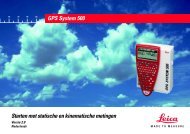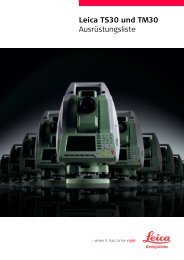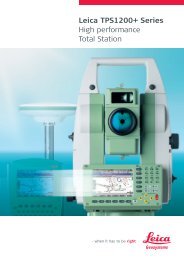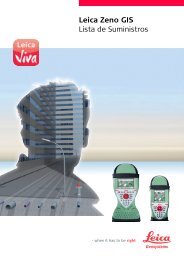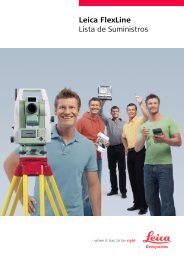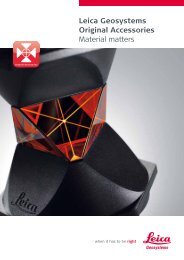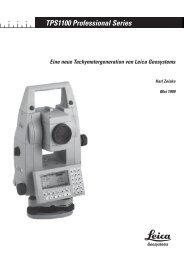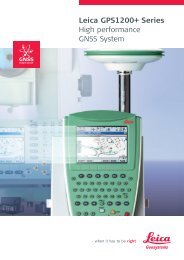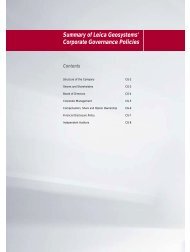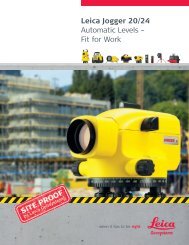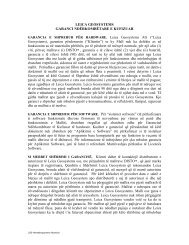You also want an ePaper? Increase the reach of your titles
YUMPU automatically turns print PDFs into web optimized ePapers that Google loves.
olombia<br />
From the ground to the map and then to the land register plan with the<br />
Leica INFOCAM system.<br />
cal restitution systems,<br />
digitising stations and<br />
precision plotters. Previously<br />
on maps, despite great<br />
production expense, it was<br />
often the case that hardly a<br />
course of a river could be<br />
recognised, if it existed at<br />
all, today, detailed contours<br />
and current changes<br />
brought about by building<br />
work can be recorded and<br />
displayed in only a fraction<br />
of the time once needed.<br />
Printing plates in various<br />
scales for the same territory<br />
no longer have to be individually<br />
engraved by hand<br />
but can be produced from<br />
one and the same database.<br />
This combines various<br />
types of information and<br />
contains, for example, not<br />
only the boundaries of parcels<br />
of land but also their<br />
current use, owner etc.<br />
Once the required data is<br />
stored in the database, any<br />
random section of the land<br />
register map can be printed<br />
within two minutes (see picture).<br />
The National Survey<br />
In order to provide maps<br />
with coordinates (geographic<br />
referencing), the<br />
area to be represented must<br />
already contain some<br />
points with known<br />
coordinates which have<br />
already been surveyed. In<br />
the case of national maps,<br />
the National Survey is<br />
responsible for covering the<br />
country with a network of<br />
surveyed points (the<br />
national grid).<br />
In Colombia the IGAC had,<br />
during the Forties in<br />
co-operation with the<br />
former US Defense<br />
Mapping Agency (DMA,<br />
now the National Imagery<br />
and Mapping Agency<br />
NIMA) had already<br />
established such a nationwide<br />
network. It consists<br />
mainly of polygons which<br />
connect astronomically<br />
determined points. Because<br />
of the height of the<br />
Cordilleras, the impenetrability<br />
of the Amazon basin<br />
and the size of Colombia<br />
(about thirty times that of<br />
Switzerland) the work<br />
turned out to be extraordinarily<br />
laborious and<br />
only a heavily built-up part<br />
of the country could be<br />
surveyed. Because the<br />
methods used at that time<br />
(angle measurement with<br />
optical theodolites)<br />
necessitated visual contact<br />
between the points, these<br />
were located mostly on<br />
mountain summits where<br />
access was difficult, thus<br />
Colombian-Swiss co-operation<br />
on the new national survey of<br />
Colombia with Leica GPS.<br />
(Photos: D. Egger)<br />
increasing the cost of<br />
surveying them and<br />
reducing their usefulness.<br />
In the meantime, mankind,<br />
wind and weather have<br />
destroyed more than 50%<br />
of these points of the<br />
national grid. Additionally,<br />
in the course of modernisation,<br />
serious distortions and<br />
irregularities have come to<br />
light. Thus, the existing<br />
National Survey no longer<br />
suffices for the increased<br />
demands made by modern<br />
cartography. In 1994 as a<br />
logical consequence, the<br />
Geodesia section of the<br />
IGAC began the ambitious<br />
project of a new national<br />
survey for Colombia – with<br />
more easily accessible<br />
points, more exact<br />
coordinates and reduced<br />
costs.<br />
5



